|
| |
|
Selecting Door Styles by Wood Species
 Lanxin offers cabinetry in five beautiful, natural woods. All our cabinets are made of REAL high-quality wood and no particle board in any section of the cabinets.
In this section you can view the door styles offered in each species and decide which look suits your personal taste. |
|
About the Natural Beauty of Wood Cabinetry
 Wood species in all finishes will exhibit color changes when exposed to different types of light and environments over time. Through this natural process, graining differences, mineral streaks and color variations can be expected in wood cabinetry. Lanxin Cabinetry's door styles often exhibit these natural and beautiful characteristics that are inherent in all wood cabinetry. Wood species in all finishes will exhibit color changes when exposed to different types of light and environments over time. Through this natural process, graining differences, mineral streaks and color variations can be expected in wood cabinetry. Lanxin Cabinetry's door styles often exhibit these natural and beautiful characteristics that are inherent in all wood cabinetry.
Understanding these unique variations will give you greater appreciation for the natural beauty of wood cabinetry.Please take a moment to discover the natural traits that are most common in your favorite wood species. We encourage you to view a door sample in a natural finish and discuss the wood species with your kitchen design specialist to ensure you are comfortable with these natural characteristics prior to ordering. |
| |
| Wood Species Characteristics |
| Maple |
| |
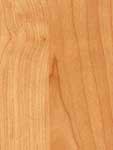 |
 |
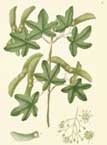 Hard maple is a very dense wood, white to grey overtones, closed pored, tight grain wood that is predominantly off-white in color, although it also contains light hues of yellow-brown and pink.
Hard maple is a very dense wood, white to grey overtones, closed pored, tight grain wood that is predominantly off-white in color, although it also contains light hues of yellow-brown and pink.
Hard maple occasionally contains small mineral, light tan or reddish -tinged streaks that will darken with stain. It is usually straight grained, but can be wavy or even curly.
It is a popular wood for cabinet, flooring and other household millwork and again, when properly selected, will result in an even, pleasant appearance. In our opinion, Maple is much more desirable in light colors than dark. Sometimes the grain of this wood can absorb a dark stain in a very uneven pattern, which can detract from the natural beauty of the wood. |
| Mahogany |
| |
 |
|
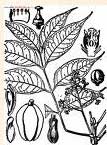 Straight grain, brown in color and very durable all describe Mahogany. While only a limited number of cabinets are ordered in this expensive wood, those constructed of Mahogany are truly striking. Sometimes left in its natural state but more often finished in deep rich colors, these cabinets will take on the appearance of fine old furniture.
Straight grain, brown in color and very durable all describe Mahogany. While only a limited number of cabinets are ordered in this expensive wood, those constructed of Mahogany are truly striking. Sometimes left in its natural state but more often finished in deep rich colors, these cabinets will take on the appearance of fine old furniture.
Out all the common decorative furniture woods, none is more instantly recognisable that mahogany. The deep swirling grain of dark wood is simply mesmerising. In any kitchen, the cabinets set the tone for the whole room, and with mahogany kitchen cabinets, you can create a look that is classy and stylish, with a more traditional feel.
Additionally, mahogany is a relatively hardwearing wood. This is ideal, given the abuse that any family kitchen is subjected to, and so provides the exact blend of functionality and fashion that is necessary for a practical, liveable kitchen.
|
| Oak |
| |
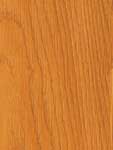 |
|
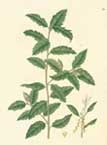
Red oak: A versatile hardwood that has a pronounced open grain and a reddish color. Red Oak is very popular for cabinet construction because it wears well and is reasonably priced. In lighter colors, the amount of the grain influences the overall color because the open grain typically absorbs more of the stain than the other surfaces. In darker colors, the influence of the grain is diminished.
White Oak: This very heavy hardwood is not white at all, but rather a very attractive gray/brown that, when properly finished, can be used very effectively and can produce a stunning look. It is often specified in its natural color with perhaps some accent staining or antiquing, called "glazing".
Quartersawn Oak: By cutting oak from the log in a different way, it is possible to have a very straight and controlled grain. This was often done in furniture built around the turn of the 19th century, particularly Stickley furniture or some of the prairie pieces that are gaining in popularity. There is a substantial premium for ordering cabinets made of this wood, but the end result is a very distinctive look.
|
| Beech |
| |
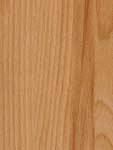 |
|
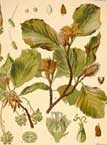 Beech is a medium dense wood. It is a closed pored, and tight grained wood, beige to medium brown, with very tiny brown dash lines throughout the wood. This makes it one of the few woods that is very easy to identify, with a fair degree of success.
Beech is a medium dense wood. It is a closed pored, and tight grained wood, beige to medium brown, with very tiny brown dash lines throughout the wood. This makes it one of the few woods that is very easy to identify, with a fair degree of success.
It is one of the least stable North American woods, so it is recommended NOT to use it if inadequately dried, or will be exposed to an unstable humidity (ie. like a cottage environment with a fireplace for dry winter heat and naturally existing, high summer humidities。 |
| Birch |
| |
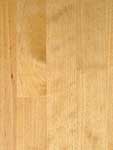 |
|
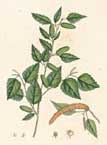 Birch trees grow abundantly in North America. Natural birch is a medium-density hardwood with a distinct, moderate grain pattern that ranges from straight to wavy or curly.
Birch trees grow abundantly in North America. Natural birch is a medium-density hardwood with a distinct, moderate grain pattern that ranges from straight to wavy or curly.
All birch has a fine and uniform texture, closed pored and no significant odor. Birch dries with a fair amount of shrinkage. It loses almost 16% of its volume going from green to dry lumber and does like to warp and twist if enough weight is not applied to the green lumber as it air dries. Once dried it is stable.
Birch is significantly easier to stain, will give you an almost identical stained finish, but with much less grief, especially if you are trying for a relatively dark colour.
The predominant sapwood color is white to creamy yellow, while the heartwood varies in color from medium or dark brown to reddish-brown. This range in color makes a distinctive statement in a birch cabinetry selection.
When people specify Birch, they are most commonly referring to White Birch. This wood is hard and serviceable with very little grain definition. Like Maple, it is best finished in lighter colors and, in fact often used as a substitute for Maple. It is sometimes difficult to distinguish from Maple. This specie of wood fools even many experts. |
| |
|
|
Welcome to Lanxin Inc.
|